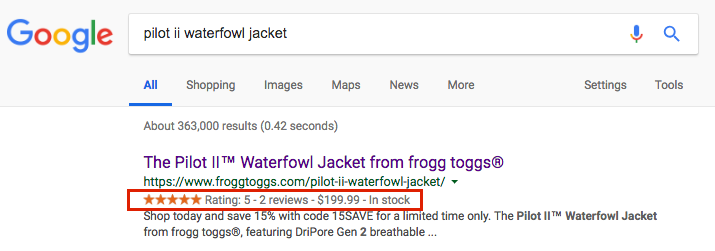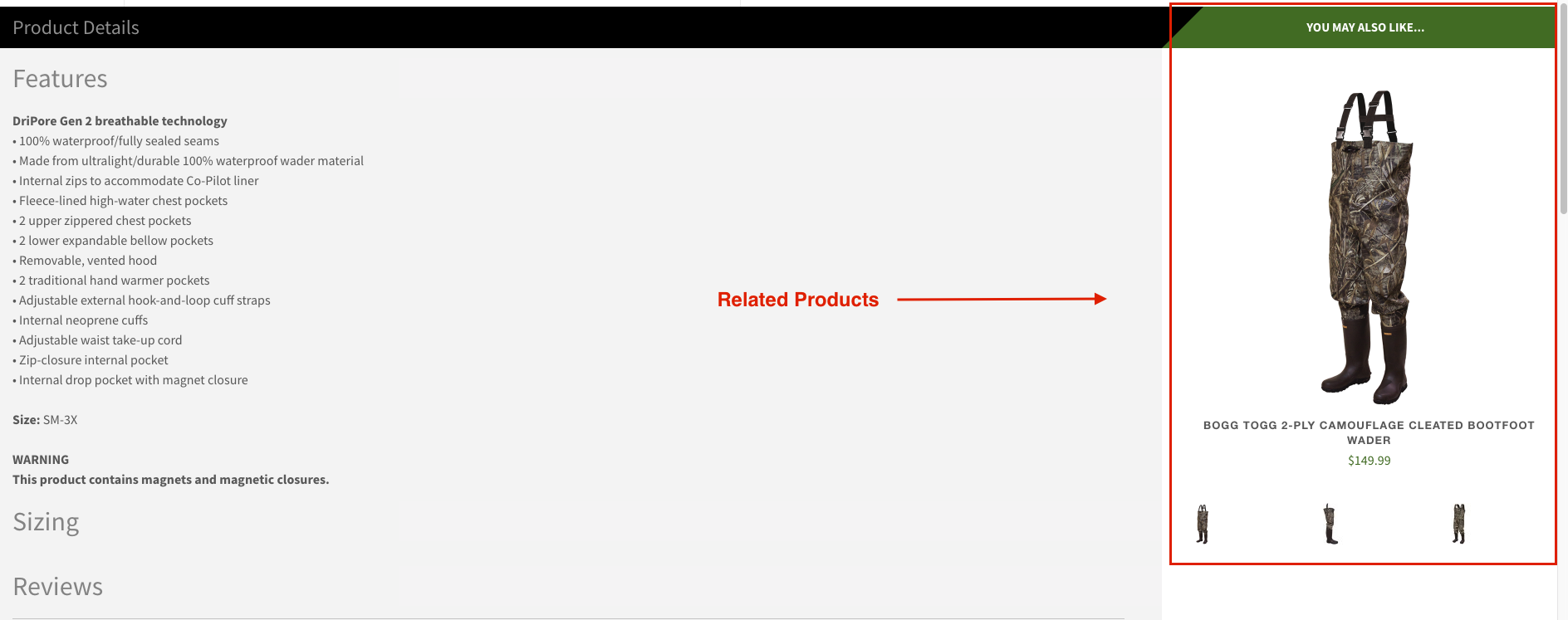
Looking to generate more revenue from your e-commerce website? Here, we’ll explore the following elements of an optimized product page as they relate to both SEO and conversions:
- Title tag
- H1 tag
- Meta description tag
- Description
- Visuals
- UGC
- Structured data markup
- Related products
- Shipping and returns information
1. Title tag
Probably the most important SEO element of a page, the title tag is what shows up as the blue, clickable link on the search engine results page (SERP). The title tag also appears on the tab in your web browser. For an e-commerce site, this should almost always simply be the product name, perhaps with a separator and the store name as a suffix, if you have room. Title tags should be limited to about 70 characters, so choose your words wisely. Consider including any relevant keywords in your title tag if they can be naturally inserted alongside the product name.
The screenshot below shows the title tag as it appears in the SERP for a product from our client frogg toggs.

2. H1 tag
Similarly, the H1 tag of a product page should almost always be the product name as it’s displayed on the page. Much like the title tag, an H1 tag is the main heading of a page, telling the search engine crawler what the page is about. You should never use more than one H1 tag per page.
Note how on the product page below, the H1 tag is simply the product name.

3. Meta description tag
The meta description tag is a brief page description — limited to 160 characters ”that also shows as a snippet in the SERP alongside the title. While this tag is not explicitly a ranking factor, think of it as a way to entice the user to click through to your product page from the SERP. The meta description tag will also usually be used as part of the link preview when a page is shared on a social media site.
The screenshot below shows how the meta description tag is generated in the SERP.

4. Description
Your product page should include a detailed description that explains all the features and aspects of the product. This description will serve as the primary written content of the page, so take the time to make it valuable and informative. Include keywords here, too, where possible.
Note the listing and explanation of features and sizing in the description below.

5. Visuals — Images and Video
Obviously, customers want to see what the product they’re buying looks like. Include large, high-resolution images so that buyers can see the important visual details of your product. Using keywords within the filename and alt text gives your image an opportunity to show up in a search engine’s image search results. Images and videos offer an opportunity to show and explain to the visitor important or potentially confusing features that are better served by visual presentation than by written copy. Moreover, search engines like to see images and videos on a page, as they’re valuable for the user.
6. UGC — Reviews and Q&A
Take the time to implement a robust reviews system for your website. Reviews provide social proof so that you can win the trust of your buyers. Not only will reviews boost conversion rates, but search engines also like to see this kind of user-generated content (UGC) on your page.
Another trend on the rise, made popular by Amazon, is showing a Q&A section where customers can both ask and answer questions about products. This is another means of UGC and can provide critical answers to questions your buyers may have, without them having to submit a contact form or send an email.
7. Structured data markup
Utilize structured data markup from Schema.org to take advantage of rich snippets in the SERP and make your product stand out. These include price, rating, stock message and more. Rich snippets can improve click-through rate from the SERP and subsequent conversion rate.
The screenshot below shows the structured data we’ve enabled for this particular product and how it appears in the SERP, including rating, reviews, price, and availability.

8. Related products
Include a section to cross-sell and upsell related products on your product page. This can be done in a sidebar, at the bottom of the page or after the Add to Cart button is clicked. Good suggestions here keep users on your site longer and lead to higher cart values.
Notice how on the product page below, we present related products in a section in the right sidebar.

9. Shipping and returns information
Quell buyers’ fears by providing pertinent purchase information directly on the page. This is another instance of eliminating friction in the funnel so that buyers don’t have to contact you or visit another page to learn about your shipping and returns policies.
Need help optimizing your e-commerce website’s product pages? Let The Brandon Agency’s team of experts handle the heavy lifting. Contact us today and ask how we can help boost your website’s SEO performance and conversions.
By subscribing to our newsletter, you agree to our Privacy Policy.




